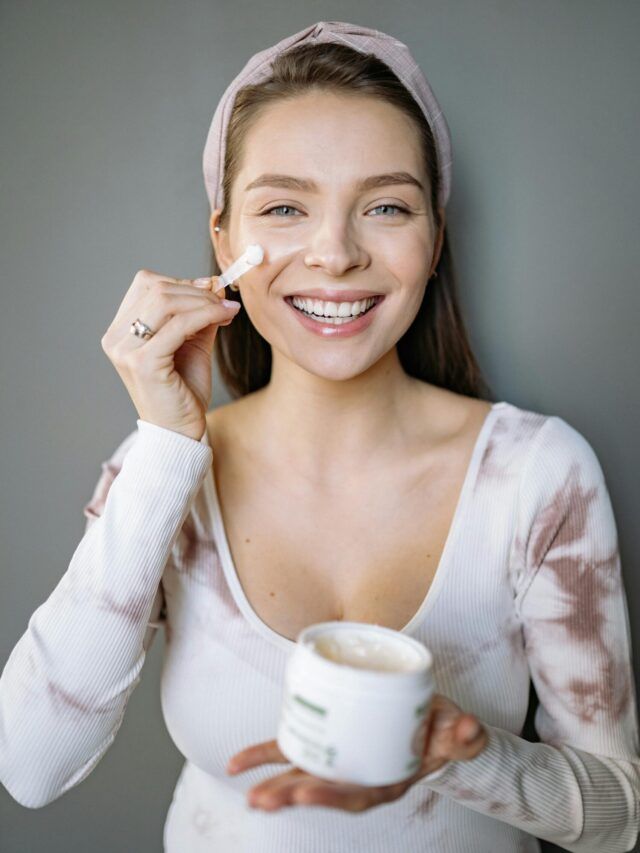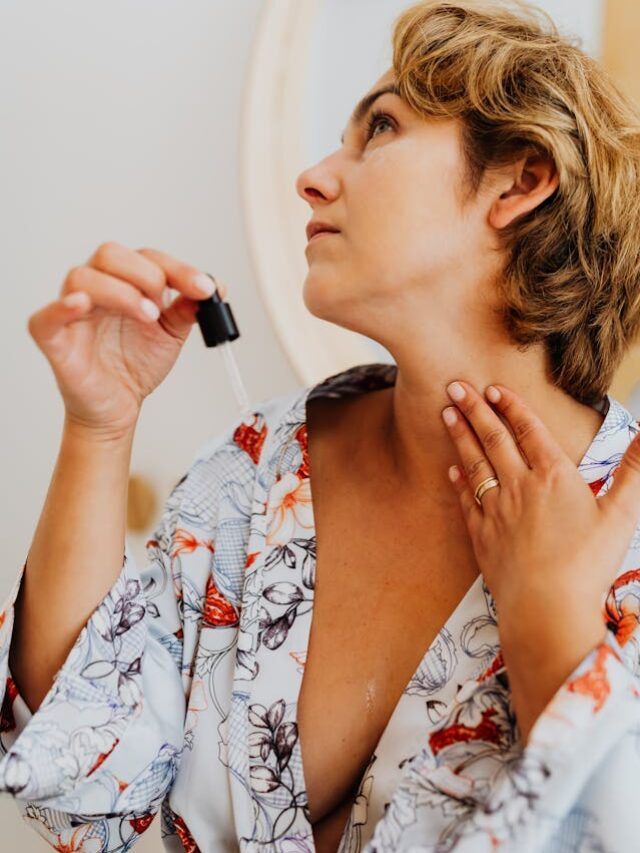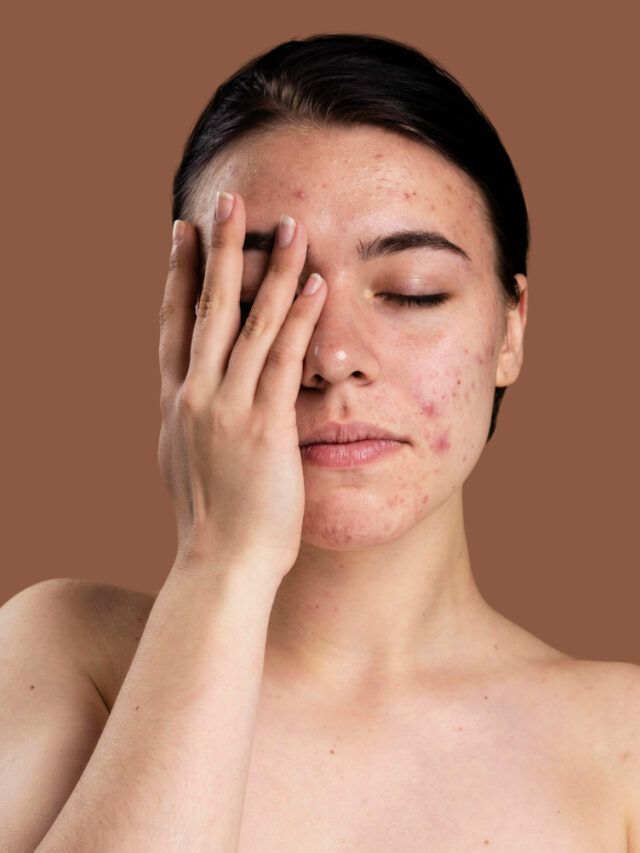One of the simplest ways you can support your skin’s natural radiance is by building sustainable and reliable skincare habits. This is because as your skin changes, it needs consistent care, from hydration and protection to nourishment, as it changes. You can personalize your habits by using the right steps and products that are compatible with the unique needs of your skin, so that it feels comfortable, looks vibrant, and stays healthy.
How Your Skin Changes
Your skin constantly evolves and adapts as time goes by. You may notice shifts in hydration, sensitivity, and texture, which often require you to adjust your skincare routine.
As you age, your body produces less natural oil and holds less moisture. So, your skin starts to feel drier and rougher than before. Add to this the effects of weather, a lifetime of sun exposure, and daily cleansing, which makes your skin a bit more reactive and delicate.
Your skin can also become more sensitive over the years. The products that worked so well before might cause new reactions. You may notice subtle changes when you wash around areas such as the cheeks. You may experience a bit more stinging and redness than usual.
Texture changes, such as new lines, rough patches, or bumps, can also show up as the skin’s outer barrier gets thinner and healing becomes slower. Even if you have never dealt with sensitivity before, your skin may need more gentle products now.
Skincare to Fit Evolving Needs
To support your skin’s changing needs, you can consider adjusting your skincare routine. This can mean switching to a hydrating moisturizer or a creamy cleanser. Investing in products with hydrating ingredients, specifically hyaluronic acid and ceramides, can help restore moisture and comfort to your skin.
Mature skin is also more prone to inflammation and damage from harmful UV rays. Exposure to UV rays speeds up the breakdown of collagen and elastin, which are responsible for keeping your skin supple and firm. So, sun protection needs to be a priority in your skincare routine.
Sometimes updating your skincare routine simply means giving your skin more attention and time each day. This entails tweaking your go-to daily routine a little bit over time and being curious and flexible about trying out new products. You can try out new textures, formulas, or application methods. This can help you keep up with what your skin needs to feel comfortable and radiant, no matter the season or stage you’re in.
Whenever something feels off or your skin feels extra-sensitive, take it as a cue to readjust your routine so you can take care of it in a way that feels right for you. This kind of gentle approach lets you enjoy your skincare routine.
Daily and Weekly Beauty Routines That Help
When you have a well-planned daily and weekly routine, keeping your skin feeling comfortable and glowing gets easier. Your skin becomes resilient and responds well to whatever changes come along on any given day, whether it is because of stress, weather, or products. For this, you have to focus on consistent habits in the morning, at night, and throughout the week. All you need is a few simple steps and regular care to ensure your skin stays hydrated, radiant, and at ease.
Step-by-Step Morning Routine
A morning skincare routine is essential, as it prepares your skin for the day by cleansing away overnight buildup, hydrating it, and protecting it from environmental factors such as sun, pollution, and free radicals.
Cleanser
For most skin types, a gentle and non-stripping cleanser works quite well. It cleans all the dirt, debris, and product buildup without stripping the skin’s natural oils, leaving you feeling fresh and ready for the day.
Toner
Using a toner is optional. However, you should know that a toner is great for hydrating and maintaining your skin’s pH. You can pick formulas that don’t contain any irritating ingredients, such as fragrances or sulfates, especially if your skin feels a bit tight after cleansing.
Spot Treatments and Serums
After toner, you can use an antioxidant serum, especially one that contains vitamin C. This can shield your skin from environmental stress while getting rid of dullness and hyperpigmentation.
Moisturizer
You can choose a moisturizer with lots of hydrating properties to support your skin barrier. A good moisturizer helps with softening the appearance of lines, keeping your face feeling calm and plump.
Eye Cream
If you like, you can dab on eye cream. Pick a product that has soothing and hydrating ingredients that can reduce puffiness and dryness around the eyes.
Sunscreen
Never skip sunscreen! End your morning skincare routine with a broad-spectrum SPF to keep your skin protected from harmful UV rays. If you are stepping outdoors, apply sunscreen on all exposed areas at least 30 minutes prior. It is good to reapply sunscreen every two hours. When staying indoors, applying sunscreen just once is good enough.
Evening Routine for Skin Recovery
Your skin’s natural repair and regeneration process is at its peak when you’re asleep. To support this process, you need a good evening routine. This allows your skin to heal from daily damage while boosting collagen production and improving product absorption.
Makeup Removal
You can start with a gentle makeup remover or cleansing oil to wipe away makeup, sunscreen, and daily grime.
Double Cleanse
This is not an essential step, but it is needed if you wear or spend a lot of time outdoors. Double cleansing with a water-based cleanser removes product buildup and cleanses the skin.
Toner or Hydrating Mist
Prep your skin for nighttime products with a toner. You can also use a light hydrating mist to refresh your skin. Toners or hydrating mists are especially good if your skin tends to feel dry after cleansing.
Serums
Evening is when you can use thicker formulas, such as serums, since these products work with your skin’s natural repair and renewal cycle that occurs while you sleep. Some popular nighttime serums include those containing hyaluronic acid for hydration, peptides to support skin structure, or retinol for smoothing and rejuvenation.
Moisturizer
Pick a heavier and nourishing night cream that can deeply repair your skin and lock in moisture while you sleep.
Eye Treatment or Lip Balm
This is an optional step, but eye treatment and lip balms can give extra hydration. Delicate areas, such as the skin under the eyes and lips, tend to dry out quickly overnight. Eye creams and lip balms help keep these areas comfortable.
Weekly Habits
Along with daily care, establishing a weekly routine for your skin’s well-being is essential. Set aside a day in the week for this. You can deep-clean and exfoliate your skin while addressing specific skin concerns that your daily routine may not cover. Doing this helps remove deep-seated dirt, oil, and dead skin cells that clog pores and cause breakouts. With a consistent weekly routine, you also support your skin’s health while improving the effectiveness of your daily products.
Exfoliation
You can use a chemical or physical exfoliant to remove dead skin cells and unclog pores. Weekly exfoliation helps improve cell turnover, reduce the appearance of fine lines, and support an even skin tone.
Masks
There are many options, including hydrating, calming, and brightening masks. You can use a store-bought mask or make one yourself at home using organic ingredients. You can apply the mask once or twice weekly to meet your skin’s changing needs.
Facial Massage Tools
Tools like gua sha stones and rollers are useful for lymphatic drainage, reducing puffiness, improving blood circulation, and relieving muscle tension. Make sure you use light pressure and a hydrating product, such as a light serum or oil, for a comfortable and safe application.
How to Layer Products
The effectiveness of the products that you use really depends on the order in which you apply them. Layering the products in the right order makes a lot of difference. Layer the lightest formulas first, then layer the heaviest. This way, each product gets a chance to do its job. Your skin is better able to absorb the benefits of the various products. All you need to do is be more intentional about the order of your skincare products to get better results and avoid problems like pilling or wasted product.
Tips for Avoiding Pilling and Maximizing Absorption
Let the Products Soak In
After you apply one product, let it soak in for a couple of minutes before you move on to the next. You also avoid the “balling up” effect or pilling, ensuring better product absorption.
Go From Light to Heavy
The best way to layer your skincare is to stick to a light-to-heavy sequence. This means applying watery serums first, followed by creamy lotions and oils. So, your morning skincare routine can start with a hydrating mist or watery toner, followed by a slightly thicker serum, such as a vitamin C serum, then a bit heavier moisturizer, and finally sunscreen. This method helps prevent the heavier products from blocking lighter ones. At the same time, there is less risk of irritation or a weakened skin barrier.
Remember That Less is Better
It is not always necessary to have multiple steps in your skincare routine. In fact, using too many products can lead to breakouts and inflammation. Sometimes, less is more when it comes to skincare. This is because when you use fewer products, your skin is able to function and heal properly. Besides that, using just a few high-quality products can also be more cost-effective and sustainable. You can simply focus on the products that your skin loves and skip the extra steps that feel heavy or unmanageable.
Ensure Oil- and Silicone-Heavy Products Go Last
If any of the products you use are rich in silicone or oil, apply them last, as they seal the products beneath them. But if you are applying these products during the day, ensure you apply sunscreen afterward.
Use Gentle Motions
You can ensure smoother application and better absorption of your skincare products by using gentle and upward strokes. For most quick-absorbing products, like toners and serums, patting the layers works quite well.
Tools and Techniques That Make a Difference
You can add beauty tools and skincare devices to your routine to make your skin look and feel healthier. When used correctly, these tools can help products absorb better, boost your skin’s natural glow, and even add a little relaxation to your day. The right tool can offer real benefits, especially if you pick the ones that suit your comfort, needs, and budget.
Common Tech Devices for Comfort and Radiance
Facial Brushes
Your weekly exfoliation and deep cleansing routine can get easier with facial brushes. When used correctly, a facial brush can leave your skin feeling fresh, helping it better absorb serums and creams. Pick a brush with soft bristles for a deeper cleanse without harsh scrubbing that damages your skin barrier.
Microcurrent Facial Devices
These devices deliver a low-level electrical current to the skin to help tone facial muscles, smooth the appearance of lines, and make your skin firmer. Using these devices for just a few minutes per day can give you noticeable results.
Radio Frequency (RF) Facial Devices
You can boost your skin’s collagen production with these RF facial machines. They gently heat the deeper layers of the skin, giving a firmer, tighter feel over time. The devices are safe for at-home use. Just make sure you follow all the instructions carefully and take necessary precautions as mentioned in the manual that comes along with the box.
Handheld Face Massagers
You can use facial vibration massage as part of your skincare routine to improve product absorption, enhance skin texture and tone, stimulate collagen production, and enjoy a gentle, spa-like treatment right at home. Many often come with different tools that serve specific purposes, such as cleansing, improving product absorption, and lifting and toning facial muscles.
LED Therapy Devices
While these are a bit more expensive than other skincare tools, LED therapy devices are known to support overall skin vitality. Different wavelengths of light are used to address issues such as inflammation, breakouts, dullness, and more. Always follow the manufacturer’s guidance for safe use.
How to Use Each Tool Safely
To get the best results from your skincare tools, use them safely. Incorrect use can damage your skin, such as causing inflammation from excessive pressure. Meanwhile, not cleaning the tools can transfer bacteria to your skin, causing breakouts and irritation. By using these tools safely and correctly, you ensure you get the intended benefits without harming your skin’s health.
- Start your skincare routine with a clean face and clean tools. You can wash your tools with gentle soap and warm water after each use, then air-dry them to avoid bacterial buildup.
- Apply a few drops of serum or moisturizer for smoother motions and to avoid tugging at the skin before using any rollers or massagers.
- Use light pressure when using facial brushes, and avoid over-scrubbing, especially if your skin is sensitive, dry, or inflamed.
- Avoid using tools for more than a few minutes each session. All you need is a regular, gentle massage to achieve the best results over time.
- Following the manufacturer’s instructions for more advanced tech devices, such as vibration massagers and LED masks.
- Keep all your tools in a clean and dry spot. To maintain hygiene and safety, avoid sharing personal devices with others.
How to Find Ergonomic, Accessible Options
A well-designed, easy-to-use skincare tool is useful to have, as it helps you enjoy your skincare routine comfortably and safely. With ergonomic designs, you avoid any physical strain and injury while getting the best out of your skincare routine.
- Pick brushes and tools with non-slip, cushioned handles for a comfortable, steady grip, even when your hands feel achy or slippery.
- Check out tools that feel light in your hand and aren’t too bulky. This makes it easier to maneuver, making your skincare routine more relaxed and comfortable.
- Look at the shapes and materials of the tools. Curved and contouring designs are easier to use along the jawline and cheeks, while sturdy, smooth materials, such as polished stone or silicone, are gentle on your skin and easy to clean.
- Use travel-size or “mini” options that are easier to handle and perfect for targeted use on skin around the eyes and lips.
- Try out the devices in-store if possible. You can also look for video demonstrations to understand if a tool seems easy to use for your needs and comfort.
How to Listen to Your Skin to Make Mindful Adjustments
It’s normal for your skin’s needs to change with the season, your daily routine, or even how you feel. Even amid these shifts, you can keep your skin comfortable and looking its best. You can do this by simply staying tuned in to its new needs and adjusting your routine. This can be achieved either by using new products or by skipping a step.
Signs Your Skin Needs a Change
- You might experience increased dryness, tightness, or rough patches, which may indicate that your skin needs more hydration. You can switch to a richer moisturizer during this time.
- Redness, stinging, or increased sensitivity can mean you have been using too much of the actives or exfoliants. Try to simplify your products, skip them for a while, and give your skin a break.
- Sometimes, your skin can break out, look dull, or feel a bit off. Reassess your routine and check if a gentle moisturizer or lighter cleanser is what your skin needs.
- If your skin feels different with the changing weather, try swapping products with the seasons. Use lighter moisturizers in summer and heavier, creamier ones in winter.
- You can skip steps or use fewer products on the days when you feel tired or uncomfortable. It’s okay to adjust your routine according to your mood, lifestyle, and energy levels.
Tips for Experimenting With Products
- Change your products one at a time. This way, it is easier to do what is helping and what is not.
- Start new products slowly and in very small quantities. Start by using them every other day and gradually increase the amount until your skin adjusts.
- Keep track of how your skin feels. Whenever needed, take a pause and change course if something isn’t working.










There are no comments yet